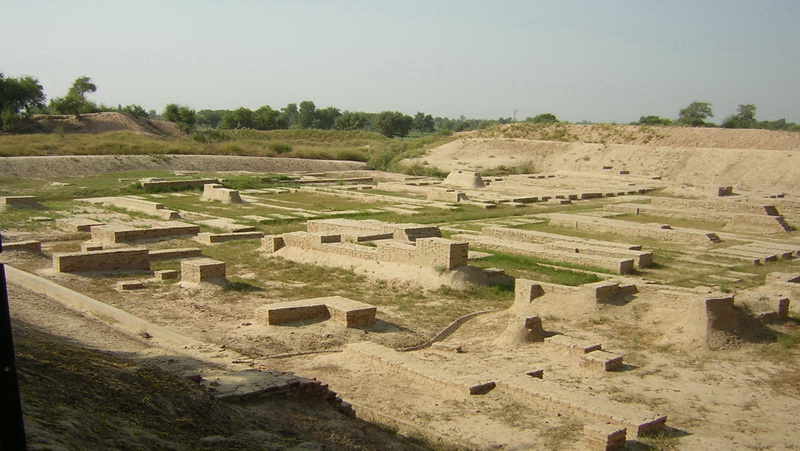Page 5
Ruins

These ruins are a sign this was a complex, highly organized civilization. Why do you think they are evidence of this?
By examining the ruins, it is possible to infer that Harappan life was very sophisticated and organized. There are several pieces of evidence that would lead to such a conclusion. The first and perhaps the most important is the existence of a water‐control system (not visible in the above picture). This system included not only a complex sewer design, but public baths and personal showers for the wealthy or powerful. The second piece of evidence is the grouping of houses in Harappan cities. Before building a city, the Harappans designed the layout of their cities, so that they could be as orderly as possible. Finally, archeologists have found a large building that was long since thought to be a granary. However, recent research is casting doubt on this explanation, and many simply refer to it as The Great Hall. Regardless of its purpose, this demonstrate architectural sophistication.
Washing and Its Religious Significance


Some archaeologists think that washing may have had religious or ritual meaning. What do you think they mean by that? What else can you surmise about this aspect of the Indus River civilization?
Some archaeologists thinking that washing may have had a religious or ritual meaning. By this they mean that many people in the Indus River civilization may have partaken in public or private bathing not only to clean, but also to complete certain rituals. This notion is backed by recent evidence discovered in Harappa and Mohenjo-Daro, where large public baths were found. While most cultures were concerned with cleanliness, the Indus River civilization seems to have a special connection. It is possible to surmise that the people of this civilization viewed bathing in a religious way because they believed the Indus River to be sacred. This is quite likely because it was what not only provided them with water, but gave life to the plants, to the animals, and even to the humans living near it. Because of this, the river would have seemed holy, and therefore, the idea of cleanliness was attributed and integrated to their religion and rituals.